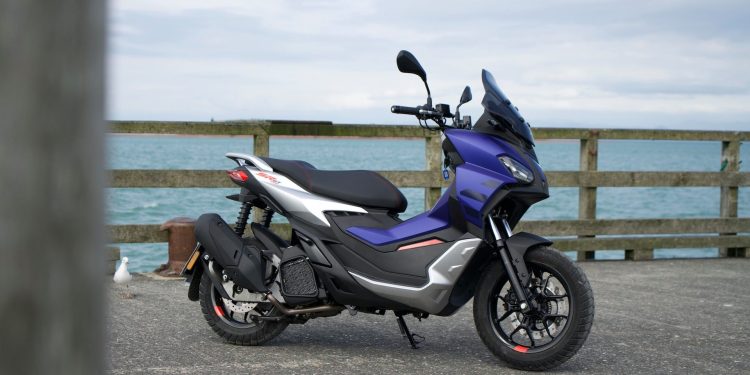2022 Aprilia SR GT 200 review
Words NZ Autocar | Images PL
Rather clever it was for Aprilia to host the launch of its new SR GT 200 scooter at go-kart tracks around the world. It shows off the newbie’s handling chops in a fun and safe setting. We enjoyed the outing at Hampton Downs.
However, we weren’t about to let that stop us taking the little scoot for an extended strop in and out of town.
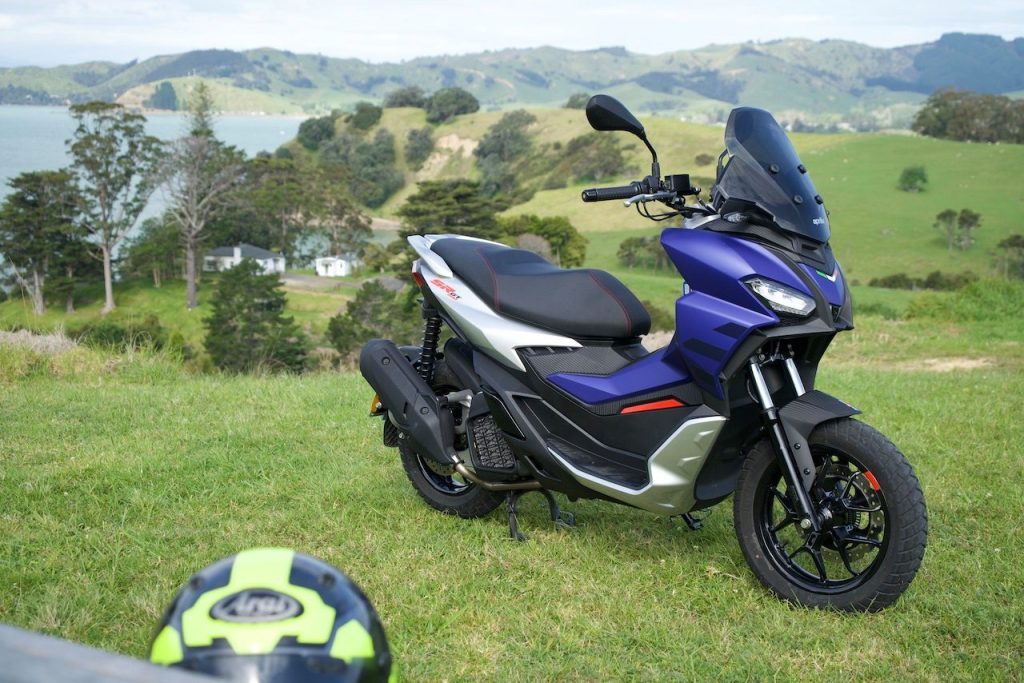
And that’s because not long before we’d heard about folk doing long haul tours on Vespa GTS 300s, from Auckland to up around the Hokianga and back. These little warriors can evidently reach speeds of up to 130km/h, meaning sustained cruising speeds of 100km/h should be a relative doddle.
We’d had experience of 125cc scooters in days gone by and they are fairly much maxed out doing 100km/h. They can do it but only when conditions are favourable. So what about this new SR GT 200? Would it be up to the task?
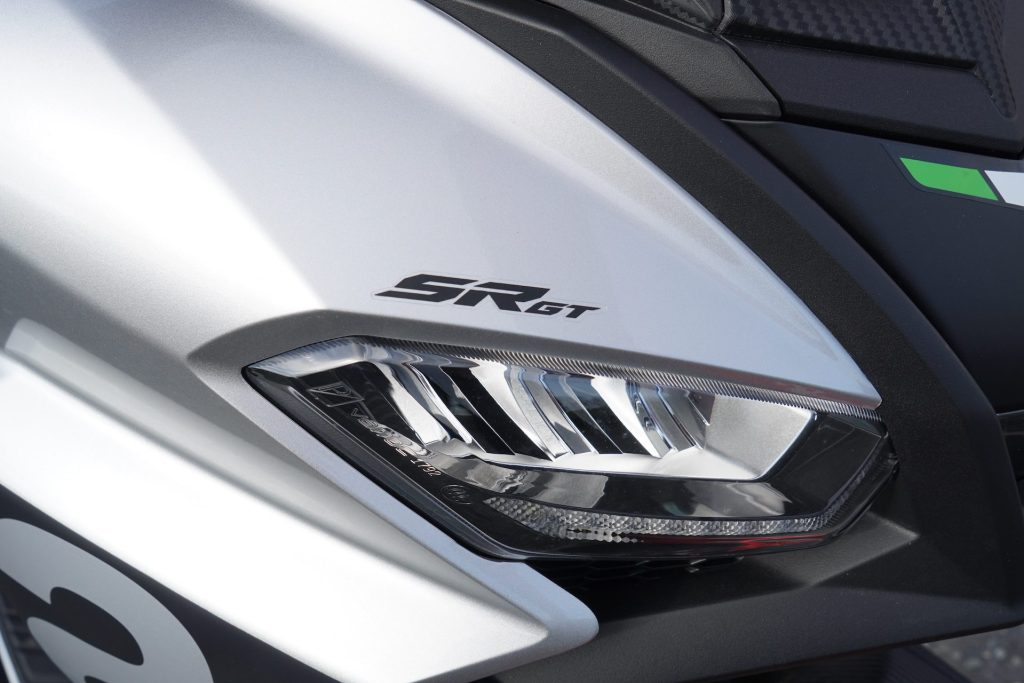
First a quick recap on what it is exactly. Well, there are two of them coming here, kind of; one essentially but with two different paint jobs. This one is the base model at $7490 while for an extra $200 you can buy the Sport variant. That would be the best couple of hundy you will ever shell out on a scoot. For with that you get smart red wheels, a more dramatic red, yellow or jet black paint finish and a rather dashing ‘a’ on the fairing to indicate you are now part of the Aprilia family. It also looks like a proper bike from front on, and has proper handlebars too.
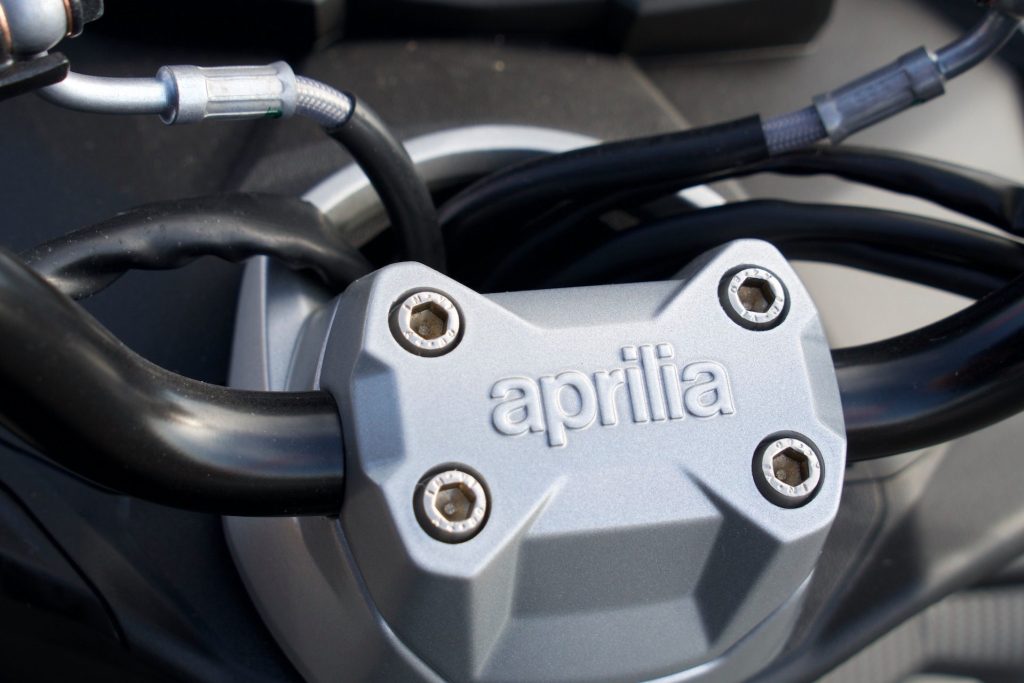
This is a scooter that would be a motorcycle given half a chance, despite the traditional scooter layout with the engine hanging over the rear wheel connected by a CVT driveline. It’s also a step through design, or more like a step over system, giving it additional chassis strength. As is typical of a scooter there’s a handy underseat storage area that can evidently hold a full face helmet. Or 25L of, for example, my back pack full of test gear.
Other interesting features include MotoGP-style winglets which you have to be on the lookout for as they’re integrated in the fairing design, a grab rail and pull out pillion pegs, and a trio of LED lights up front, along with an LCD dash.
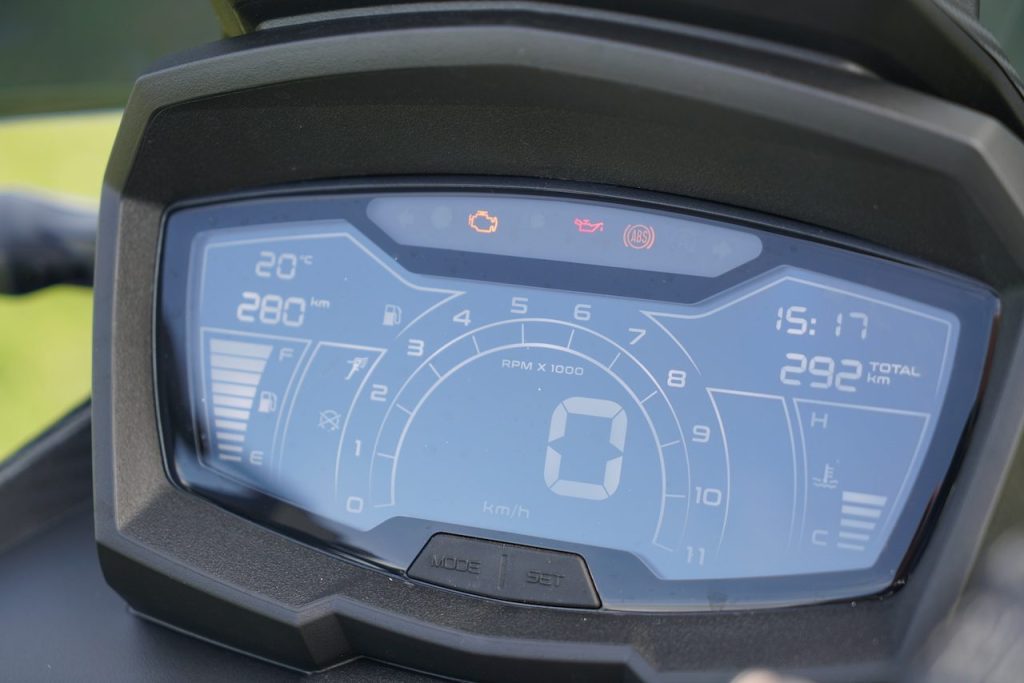
The design also hints at adventure bike, with long travel suspension, ground clearance of 175mm and tyres that look almost like they might be dual purpose, but really are designed for a life on tarmac. Other unusual design aspects include handlebars on risers – not your typical scooter then – and a screen and fairing that offer quite decent weather protection. There are also two positions for your feet, flat on the boards like on a regular scooter and forward at a 45 degree rise, like on a maxiscooter built for open road cruising.
It’s pretty lightweight too at just 145kg wet, but has reasonably solid output, 17hp arriving at 8500rpm and 17Nm chiming in at 7000rpm, not that there’s any rev counter to indicate such. Hey, it’s a scooter.
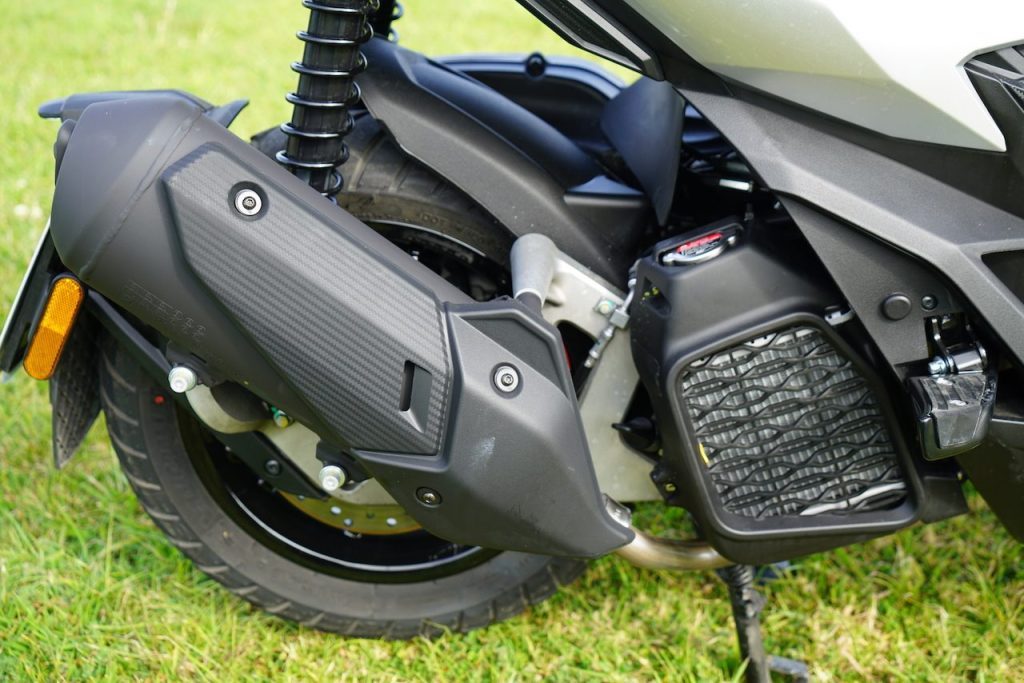
So its power to weight is pretty good, the payoff being claimed fuel use of 2.6L/100km (almost 40km/L). You can easily achieve those figures in town, breezing along at 50km/h. Having a stop and go system contributes in a small way too. It restarts instantly as you wind on throttle, and is switchable if you don’t like it.
It also has one of the biggest front discs for its class, a 260mm petal-style rotor. We didn’t think much of the brakes initially but that was in part because of the extended lever reach. If you use all the lever, gripping it further out, you get more leverage and better bite, unsurprisingly.
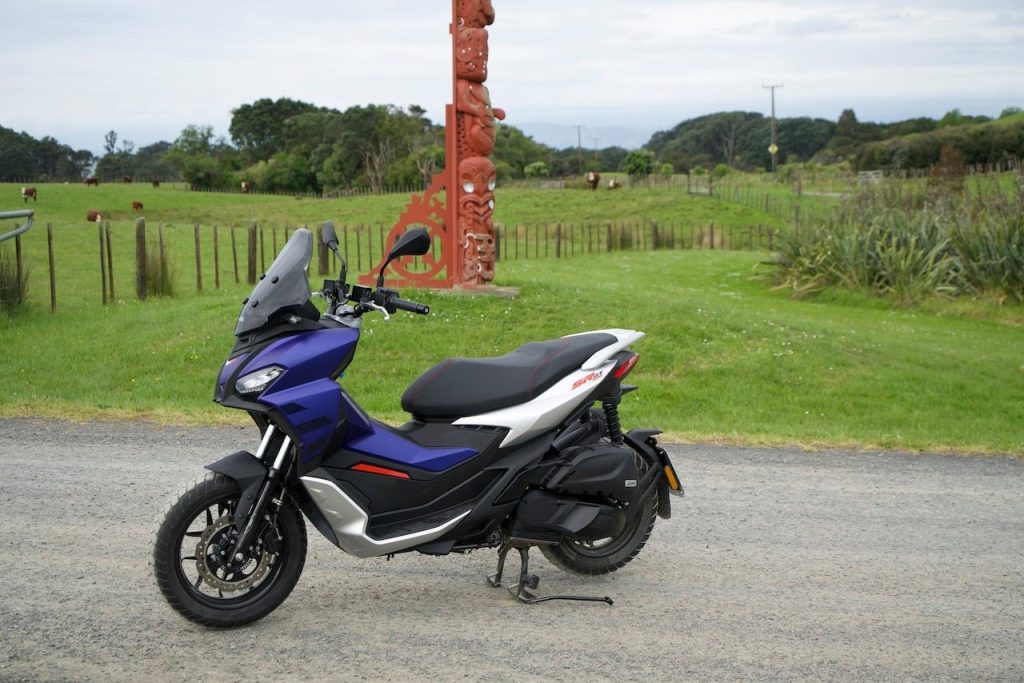
So did the experiment to ride the scoot both in and out of town work? Most assuredly. On what was a somewhat dull and rather cool day, we made it down to Tapapakanga Regional Park from Auckland, about an hour’s ride. And this simply lapped it up, despite a bit of a headwind in places. That little screen helps because you can duck down behind it to maintain pace into an adverse wind.
Handling is as good as it gets in this sector, with a reasonable mix of stability and fast turn-in ability thanks to the proper handlebars. With the smallish wheels it can tramline at times but they’re bigger than most scooter hoops, being a 14-inch front and 13-inch rear. Just steer clear of under-repair tarmac. With rear weight bias, it feels really stable fanging into corners too hot and squeezing the left lever (rear brake) to set corner speed and tighten your line.
It’s the ride quality that impresses here too, the extra suspension travel and thick seat foam paying dividends.
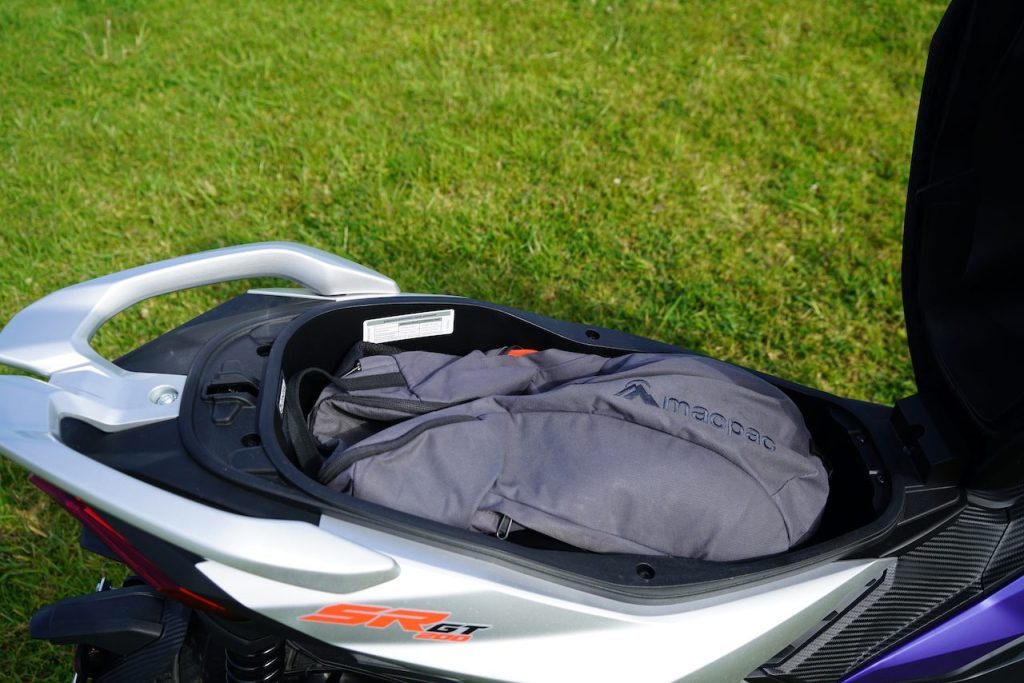
After an initial squirt on the go-kart track we thought it was a bit of a ride revelation and we were not disappointed. We’re not sure the feet up position adds much in the way of cruise-ability, however, and kept reverting to the traditional feet down stance.
It’s no Vespa 300 for acceleration, taking an extra 8sec to hit 100km/h, 18 in total. But it gets to 50 from stopped in 3.5sec and the initial take off is obviously more important for town work. It sure does blast away from most cars when you’re at the head of the pack.
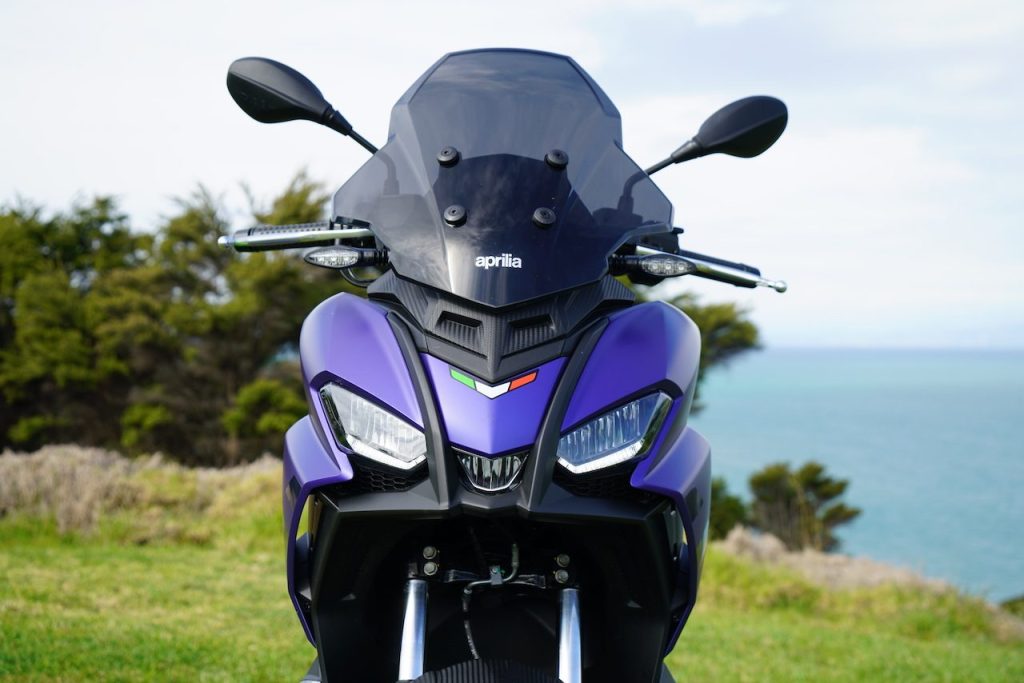
A couple of other things. This looks different and interesting enough to attract non-scooter types, uses next to no gas in town (it cost me $5 to refuel!) and at its price point seems like rather good buying if you’re wanting to replace those inner city shopping jaunts with something a bit handier in the traffic and with a vastly better carbon footprint.
And if you’re thinking of the odd jaunt out of town, there are top boxes, a touring windshield, fog lights and a multimedia app for smartphone navigation. This wee ripper is amongst the most versatile scooters of its size I’ve encountered.


